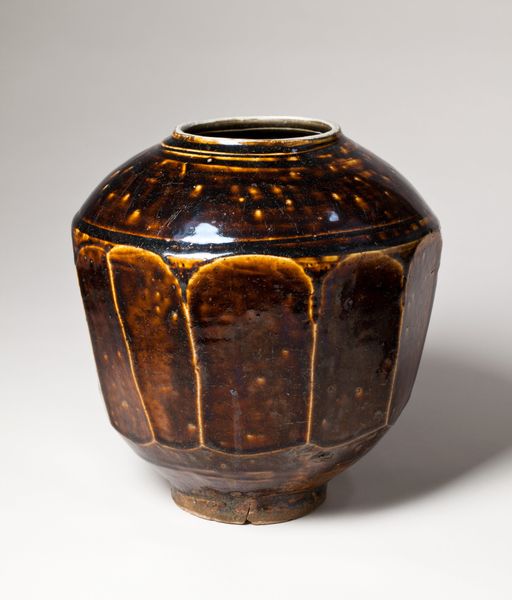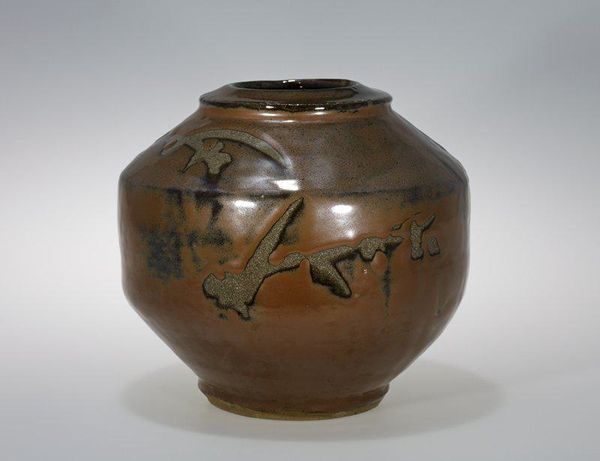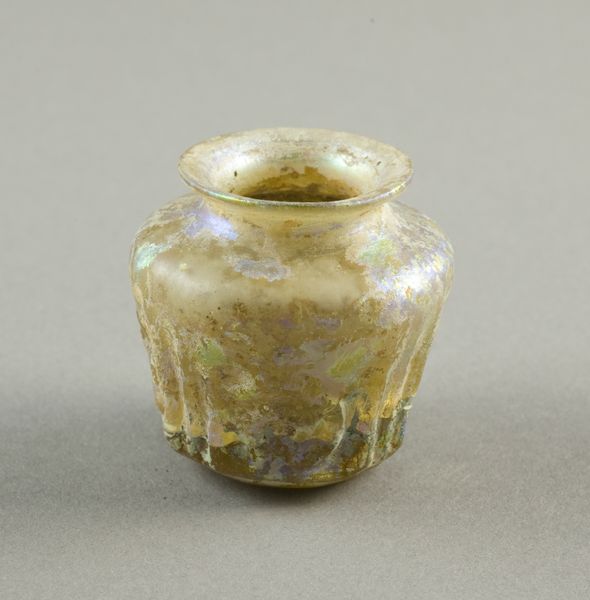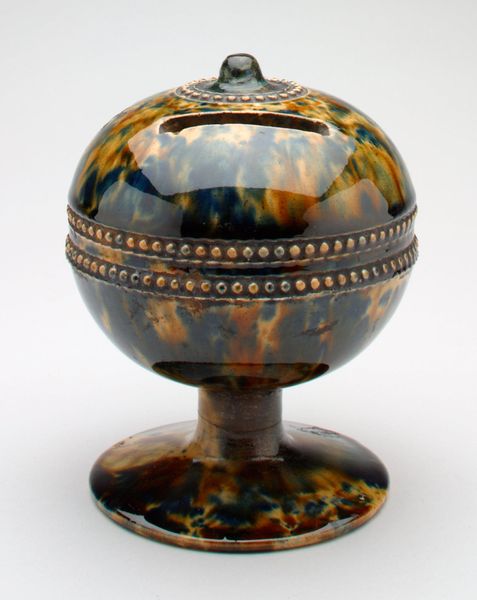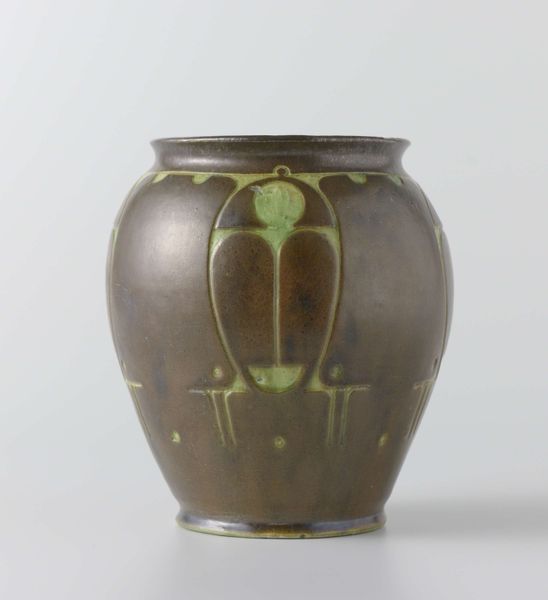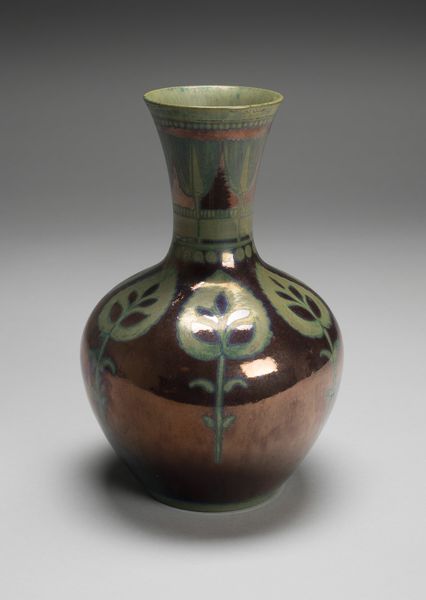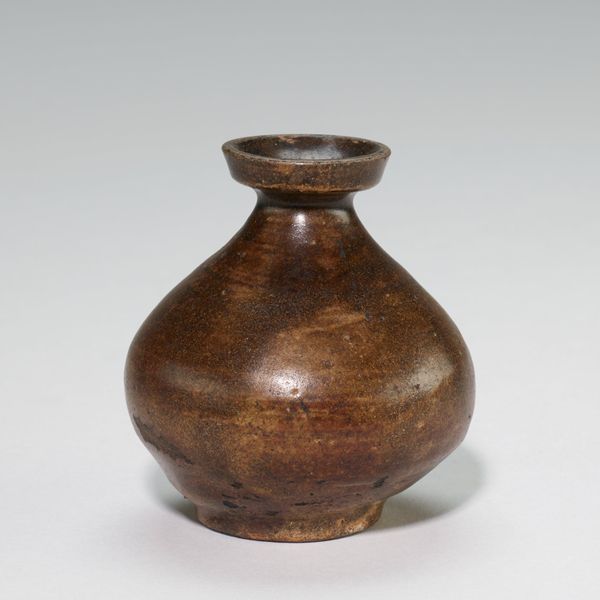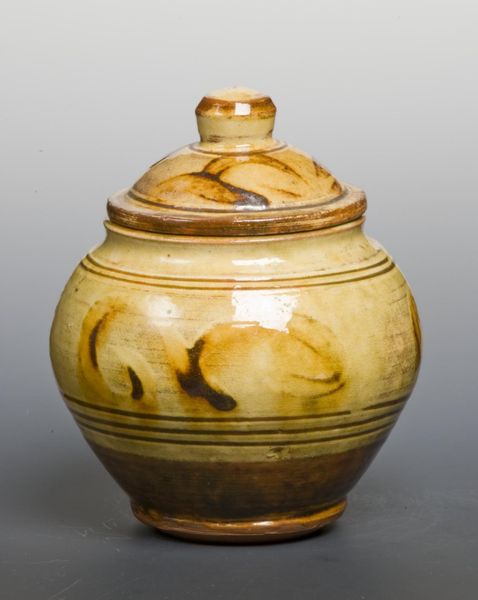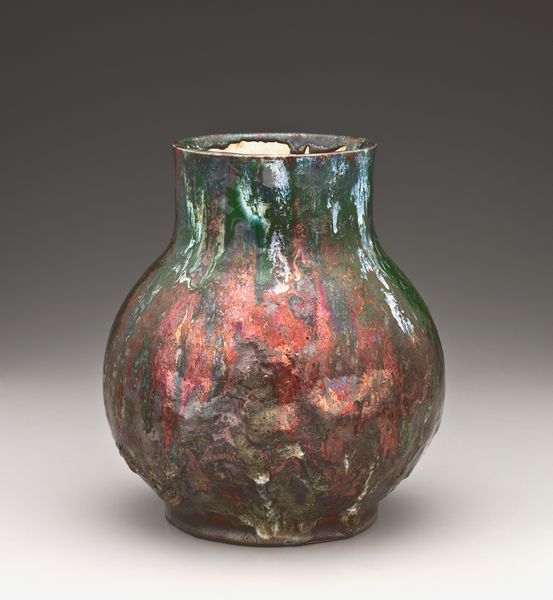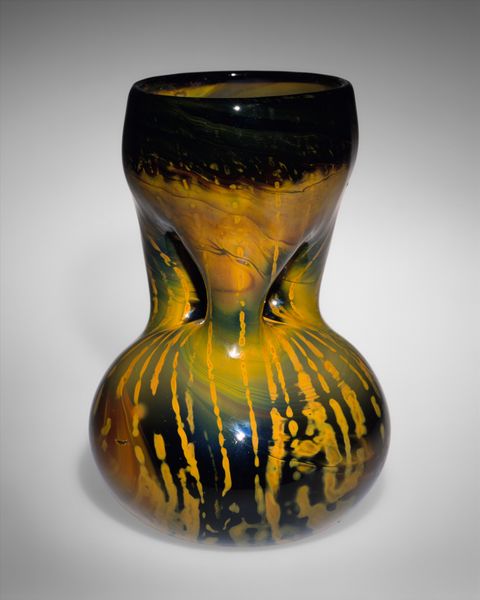
ceramic, earthenware, sculpture
#
asian-art
#
ceramic
#
vase
#
form
#
earthenware
#
stoneware
#
folk-art
#
sculpture
#
ceramic
#
decorative-art
Dimensions: 8 11/16 x 9 5/16 x 9 5/16 in. (22.07 x 23.65 x 23.65 cm)
Copyright: No Known Copyright
Curator: This earthenware vase comes to us from the 20th century and was crafted by Hamada Shōji. Its earthy tones immediately set a grounding tone, don't you think? Editor: I do, there is such weightiness and immediacy to the piece. A humble sort of elegance, in my opinion. But I’m curious, why this specific form? The shape, divided by that subtle horizontal ridge, what does it say about use and utility here? Curator: That's a great question. Consider Hamada’s place within the folk-art movement. This wasn’t just about crafting a vessel; it was about honoring the labor, material, and process involved. Function is certainly considered, yet Hamada brings it into an expressive form. It straddles that interesting boundary between craft and fine art, doesn't it? Editor: It truly does. That glaze, for instance – pooling, dripping in such an uncontrolled manner near the base – feels very deliberate in its apparent haphazardness. Like embracing imperfection as a conscious choice. Do you think the cross inside the circle bears religious significance or serves a more decorative purpose? Curator: My perspective leads me towards function informing decoration and expression; folk-art objects frequently blur the distinction. Also, you notice how this so-called haphazardness still emphasizes this object’s formal characteristics, adding subtle dynamism that brings it alive. It avoids sterile perfection while simultaneously evoking tradition. Editor: Beautifully said! There’s a wabi-sabi spirit to the object that resonates so clearly. Its asymmetry whispers of handmade origins, and evokes themes about life and aging in the natural world. I think it makes you question the value and context that surround ceramics, even today. Curator: Precisely! Considering his dedication to stoneware and earthenware, one appreciates the skill with which Hamada balanced artistic innovation and the simple beauty he found inherent in the humblest materials. Thank you for making me contemplate that, the synthesis in its materiality feels richer to me now! Editor: The pleasure was mine. A vessel like this almost demands quiet reflection; so few art pieces succeed with so little, and I really did enjoy mulling this piece with you.
Comments
minneapolisinstituteofart almost 2 years ago
⋮
Mingei The term mingei, which translates to “folk crafts,” was coined in the 1920s by philosopher and art critic Yanagi Sōetsu (1889–1961). Yanagi, along with potters Tomimoto Kenkichi, Kawai Kanjirō, and Bernard Leach, promoted the reevaluation of crafts, including but not limited to textile, pottery, woodwork, lacquerware, metalwork, and basketry, especially those that had fallen outside of the category of fine arts. In the face of rapid industrialization, the preservation of traditional handmade crafts gained urgency. Yanagi set several conditions for what qualified as mingei. The object had to be practical, made by unnamed artists, created by hand, have regional characteristics, and be affordable.
Join the conversation
Join millions of artists and users on Artera today and experience the ultimate creative platform.
